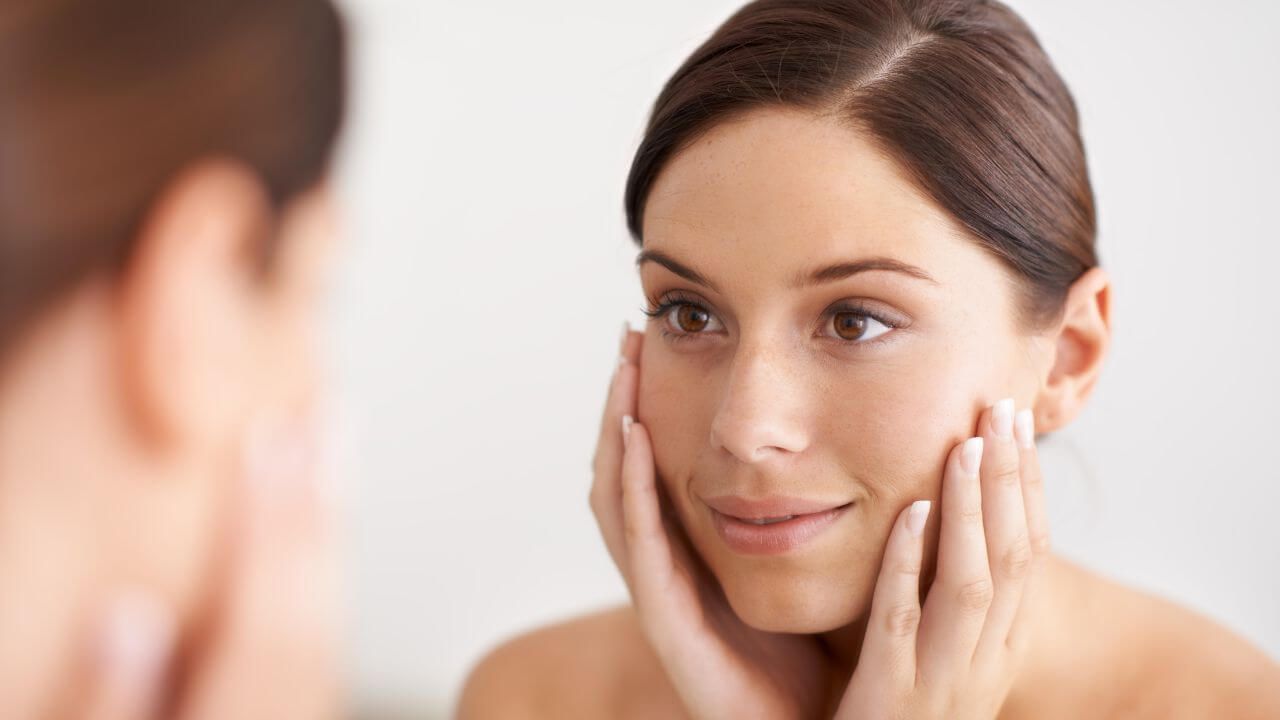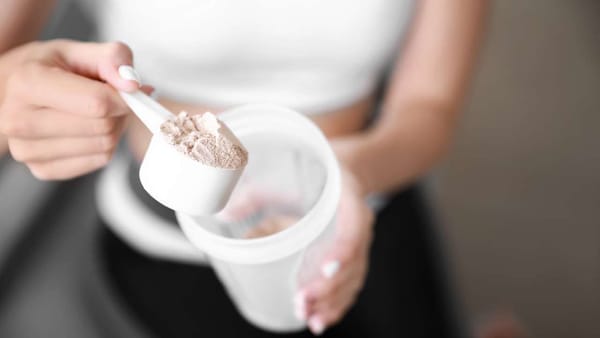Do you struggle with age spots, hyperpigmentation, or uneven skin tone?
Are you looking for an effective skin lightening solution to achieve a brighter, more radiant complexion? Look no further than Kojic Acid!
But what is kojic acid?
Everyone on the internet seems to be asking that question. To help you out, we've created an extensive guide so you can learn all about this skin brightening ingredient and decide if it's safe for use in your skin care routine.
So, whether you're looking to even out your overall skin tone or just want to achieve a more youthful, glowing complexion, kojic acid is a skincare ingredient you won't want to miss.
In this article, we'll explore everything you need to know about kojic acid, from its origins and uses to its benefits and potential side effects.
So, let's get started!
What is Kojic Acid?
Have you ever noticed how your skin can change color?
Sometimes it gets darker or lighter, and that can happen for different reasons, like being in the sun too much, getting older, being pregnant, taking certain medications, or other underlying skin conditions.
But there's a naturally occurring ingredient called kojic acid that can help. Kojic acid is derived from multiple types of funji including mushrooms, but is also a by-product of the fermentation process of certain Asian foods such as sake, soy sauce, and rice wine.
Kojic acid works by inhibiting the body’s production of melanin.[1] Melanin helps protect our skin from the sun’s harmful UV rays by increasing pigment production that gives our skin its color. Therefore, by stopping this process, kojic acid may help reduce pigmentation, lighten skin, and fade dark spots.
Uses of Kojic Acid
Kojic acid inhibits the formation of an amino acid called tyrosine causing excess melanin production to decrease. This effect can help brighten skin tone. Oftentimes, this powerful ingredient is found in beauty products such as creams, lotions, serums, and skin lightening soap designed for use on your face or hands.
Skin care products with kojic acid esters can also be used to brighten up the skin on other parts of the body such as legs and arms. This naturally derived ingredient is usually present in a lower concentration between 1-4%, promising fantastic results in just a few weeks when it comes to discoloration and skin pigmentation issues.[2]
For instance, serums containing kojic acid should be applied directly onto the skin and left there for absorption while a kojic soap using this formulation must only remain momentarily before washing off completely.

Benefits of Kojic Acid For Skin
Using products that contain kojic acid can offer multiple benefits. Some of these benefits include:
1․ Reduces Dark Spots and Sun Damage
Kojic acid is used to lighten the skin, which can make age spots and sun damage less noticeable. By reducing dark spots, kojic acid can also have an anti-aging effect on the skin.[1]
2․ Improves Melasma
Melasma is one of many hyperpigmentation types that causes dark patches on the skin, often as a result of hormonal changes observed in pregnant woman during pregnancy. Various agents have been used to treat Melasma, including hydroquinone and kojic acid from the fungus Aspergilline oryzae which acts as a tyrosinase inhibitor.[3]
3․ Diminishes the Appearance of Scars
Kojic acid has been shown to reduce the discoloration of acne scars, making them less noticeable. Although it does not improve the thickness of scar tissue, lightening the pigmentation of scars can improve their overall appearance.
4․ Helps with Fungal Infections
Kojic acid has antifungal properties, which can make it helpful in preventing and treating certain bacterial and fungal infections, like athlete's foot and yeast infections.[4]
5․ Provides Antibacterial Properties
Kojic acid also has antimicrobial properties which can help decrease the chances of developing common bacterial skin infections.[5] Many body washes with antibacterial properties contain kojic acid as an active ingredient for this reason.
6․ Hyperpigmentation
Pigmentation conditions, like birthmarks and moles, are a form of hyperpigmentation. Although these generally appear at the time we're born and aren't cause for concern in most cases, they can potentially develop into cancer as we age.
Kojic acid is not limited to treating bigger areas with pigmented irregularities; it also works wonders for sun damage, age spots, and scars alike!
Looking for the best body wash to help reduce hyperpigmentation? Check out our list of the best body washes for hyperpigmentation that can help even out your skin tone and brighten your complexion.
By incorporating kojic acid into your skincare routine, you can enjoy these benefits and achieve brighter, more even-toned skin.

Side Effects of Kojic Acid
Kojic acid is safe to use and rarely presents any serious risks, however, contact dermatitis may occur with higher concentrations of kojic acid.[6] Symptoms to look for that should be reported to a board certified dermatologist include:
- Irritation on the skin
- Rash formation
- Inflammation or swollen skin
- Itchiness as well as pain
It is important to be mindful when using skin lightening products containing kojic acid to avoid such reactions.
Contact dermatitis can be a result of skin irritants or an allergic reaction, and is commonly seen in those who use cosmetics to bleach skin, even kojic acid.
In addition to contact dermatitis, increased sensitivity to the sun's UV rays may also occur due to decreased melanin production in the outermost layer of skin; leaving you more vulnerable to burning and damaging your skin's protective barrier.
Kojic acid treatment can make sensitive skin more delicate, so you must take extra precautions when exposed to the sun.
Did We Mention...
Kojic Acid on Skin FAQs?
If you're among those who have questions about using kojic acid on your skin, don't worry - you're not alone. It's important to understand the facts about this skin lightening ingredient to ensure you're using it safely and effectively.
In this section, we'll address some of the most frequently asked questions about why kojic acid works well on the skin. So, read on to get the answers you need to feel confident in using kojic acid in your skincare routine.
Q: Are Kojic Acid-Infused Products Right for You?
If you're someone dealing with discoloration or pigmented skin, a kojic acid product might be your answer. Not only does it minimize the appearance of dark spots brought on due to sun damage and melasma, but it can also lighten up those pesky post-inflammatory hyperpigmentation marks that result from acne, insect bites, or any other injury due to its anti-inflammatory properties.
And if you've been looking for a dark spot treatment that'll help get rid of under-eye circles caused by hyperpigmentation, this ingredient will quickly become your go-to! But if you are sensitive to kojic acid, we recommend trying a caffeinated eye cream to wake up those tired eyes.
Q: How Can I Use Kojic Acid in My Skincare Routine?
If you have acne or melasma and are prone to developing dark spots from even minor acne breakouts or scratches, incorporating kojic acid products into your daily skincare routine can be beneficial. Many people use kojic acid as a spot treatment in the form of a brightening pad, combined with other brighteners and antioxidants.
However, it's always best to consult with a board certified dermatologist to determine the best product and regimen for your skin type. Kojic acid can be found in various forms, including potent kojic acid serum, face masks, and even kojic acid creams.
Q: What are the Alternatives to Kojic Acid?
If you're looking for alternatives to kojic acid for treating hyperpigmentation, scarring, or age spots, there are a few options to consider. Retinol, niacinamide, and vitamin C are popular brightening ingredients found in many skin care creams and serums for safe use on most skin types. Many skin care products also add glycolic acid and lactic acid to their list of ingredients for their exfoliant properties to remove dull, dead skin cells for an overall brighter complexion.
Chemical peels, prescription medications, and laser therapies are other options to explore, although some may potentially worsen hyperpigmentation.
Another alternative that can be added to a skin care routine is hydroquinone. It is a chemical that achieves the same goal as kojic acid, however can worsen dark spots in individuals with darker skin tones.
Q: How to Use Kojic Acid For Skin?
When it comes to applying kojic acid, there are a variety of products to choose from, including creams, serums, lotions, and soaps. When selecting a kojic acid product, it's important to choose one that contains a safe and effective concentration of the ingredient to avoid irritation. Typically, products with a concentration of 1-4% kojic acid are considered safe for use on most skin types.
To apply kojic acid cream, start by washing your face or affected area with a gentle cleanser and warm water, then pat dry with a clean towel. Next, apply a small amount of the product to the skin and gently massage it in, making sure to avoid any areas of broken skin and using caution around the eyes, lips, and mouth. If using a serum, wait a few minutes for it to absorb before applying moisturizer or sunscreen.
When using kojic acid products on sensitive skin, it's important to start slow and gradually increase the frequency of use to avoid any potential side effects such as irritation or inflammation. It's also recommended to use broad-spectrum sunscreen with an SPF of 30 or higher to protect the skin from further damage.

The Final Mention
Kojic acid is a powerful ingredient that can do wonders for your skin. From reducing the appearance of dark spots and hyperpigmentation to improving the overall tone and texture of your complexion, incorporating kojic acid into your skincare routine can be a game-changer.
However, as with any skincare product, it's important to be mindful of potential side effects and to consult with a dermatologist before adding kojic acid to your regimen. By taking the necessary precautions and choosing high-quality products, you can enjoy the many benefits of this amazing ingredient.
Want to stay up-to-date on the latest skincare tips and trends? Sign up for our free newsletter to receive exclusive content, product recommendations, and more! Take the first step towards achieving your best skin yet.
✅ 6 Sources
HealthMention only uses sources from authoritative and reliable resources, such as peer-reviewed studies, to strengthen the accuracy of our content.
- Saeedi M, Eslamifar M, Khezri K. Kojic acid applications in cosmetic and pharmaceutical preparations. Biomedicine & Pharmacotherapy. 2019;110:582-593. doi:https://doi.org/10.1016/j.biopha.2018.12.006
- Burnett CL, Bergfeld WF, Belsito DV, et al. Final Report of the Safety Assessment of Kojic Acid as Used in Cosmetics. International Journal of Toxicology. 2010;29(6_suppl):244S273S. doi:https://doi.org/10.1177/1091581810385956
- Lim JTE, Frcpi, Fams. Treatment of Melasma Using Kojic Acid in a Gel Containing Hydroquinone and Glycolic Acid. Dermatologic Surgery. 1999;25(4):282-284. doi:https://doi.org/10.1046/j.1524-4725.1999.08236.x
- Kim J, Campbell B, Chan K, Mahoney N, Haff R. Synergism of Antifungal Activity between Mitochondrial Respiration Inhibitors and Kojic Acid. Molecules. 2013;18(2):1564-1581. doi:https://doi.org/10.3390/molecules18021564
- Sun R, Casali L, Turner RJ, Braga D, Grepioni F. Exploring the Co-Crystallization of Kojic Acid with Silver(I), Copper(II), Zinc(II), and Gallium(III) for Potential Antibacterial Applications. Molecules (Basel, Switzerland). 2023;28(3):1244. doi:https://doi.org/10.3390/molecules28031244
- Nakagawa M, Kawai K, Kawai K. Contact allergy to kojic acid in skin care products. Contact Dermatitis. 1995;32(1):9-13. doi:https://doi.org/10.1111/j.1600-0536.1995.tb00832.x









